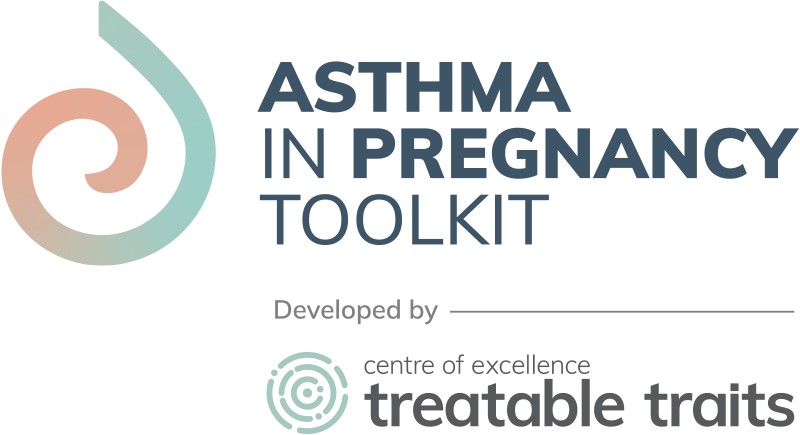Tobacco smoking in pregnancy is harmful to both the mother and fetus and remains the most important preventable cause of a wide range of adverse pregnancy outcomes. Smoking is associated with many obstetric (spontaneous miscarriage, preterm birth, developmental problems with the placenta, ectopic pregnancy and pre-eclampsia) and fetal (growth restrictions, low birth weight, birth anomalies and perinatal death) complications. Smoking also causes impairments of child growth and development and increases the risk of many chronic diseases later in life. Exposure to second-hand smoke and the use of e-cigarettes also pose serious health risks to pregnant women and children. Tobacco smoke is an identified risk factor for asthma exacerbations (Murphy et al. 2010) and women who smoke during pregnancy are also harming the development of their baby’s lungs (Gould et al. 2014, RANZCOG 2020, Aust. Dept. Health 2020).
However, most smokers who become pregnant continue to smoke and most of those who quit relapse after delivery. About 1 in 10 pregnant women smoke in Australia, and the prevalence is much higher among Aboriginal and Torres Strait Islander women (44%) and young adolescent women (37%). The actual prevalence of smoking is likely to be higher as non-disclosure of smoking in pregnancy is common, mainly due to social stigma (Gould et al. 2014, RANZCOG 2020).
Pregnancy is a time when women who smoke are the most motivated and receptive to quitting. Health professionals have a significant role in screening the smoking status of all women during pregnancy, advising them of the risks associated with exposure to tobacco smoke and offering counselling and behavioural support to all women who smoke. Pregnancy provides a potential “teachable moment” to healthcare providers to support smoking cessation on multiple occasions.

Interventions to assist women to stop smoking
Quitting smoking early in pregnancy produces the greatest benefits, however, quitting at any time during pregnancy reduces the risk. Smoking cessation interventions during pregnancy are effective and assist six in every 100 smokers to quit (Lumley et al. 2009).
Screening
Pregnant women who smoke or have recently quit should be identified at their first contact with the healthcare service. Using a multiple-choice question may increase the disclosure of smoking status up to 40% than a simple yes/no question. An example of a multiple choice question that could be used is provided below (Mullen et al. 1991):
Which of the following statements best describes your cigarette smoking? Would you say:
1. I smoke regularly now-about the same amount as before finding out I was pregnant.
2. I smoke regularly now, but I’ve cut down since I found out I was pregnant.
3. I smoke every once in a while.
4. I have quit smoking since finding out I was pregnant.
5. I wasn’t smoking around the time I found out I was pregnant, and I don’t currently smoke cigarettes.
Treatment
The first-line smoking cessation treatment in pregnancy is behavioural counselling. All women who currently smoke or have recently quit should be advised of the risks of smoking and the value of quitting. Health care providers should advise patients to stop smoking and help with any cessation attempts. Assistance can be provided with written information, referral to Quitline and/or referral to other cessation programs (Aust. Dept. Health 2020, RANZCOG 2020).
Nicotine replacement therapy (NRT) can be offered if the smoker is unable to quit without it. Although nicotine is presumed to have some risk in pregnancy, the use of NRT is likely to be less harmful than continuing to smoke because NRT delivers nicotine at lower levels than smoking, without the additional toxins contained in cigarette smoke. Nevertheless, NRT remains a category D medication for use in pregnancy. Adequate doses of nicotine and good adherence may be required for the best results considering the nicotine clearance is high in pregnant women compared to non-pregnant women (RANZCOG 2020, Aust.Dept. Health 2020).
Electronic Nicotine Delivery Systems (ENDS) and e-cigarettes
There is no evidence regarding the safety and the risks of ENDS or use of e-cigarettes (‘vaping’) on maternal and fetal health (Larcombe 2019, CDC 2019 ). Moreover, the adverse health effects of nicotine on maternal and fetal outcomes are documented. Hence, it is advised to avoid ENDS and e-cigarettes during pregnancy.
Quitline
The Quitline is a free and confidential telephone service providing personalised assistance to smokers to quit. Quitline advisors are qualified professionals with specialist training in helping people stop smoking. They can assist with preparing to quit, avoiding slip-ups and staying smoke-free. To contact NSW Quitline, dial 13 78 48 (13 QUIT). Health professionals are encouraged to refer patients to Quitline (https://www.icanquit.com.au/) for additional and ongoing support.
